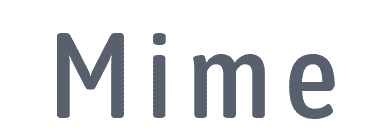Gojek Reveals 7 Digital MSME Business Trends and Profit Chances
Share

An on-demand service company, Gojek, attracted 900 thousand Micro, Small, and Medium Enterprises last year. The Decacorn also revealed the seven trends of digital MSMEs and the opportunity to gain profit in 2021. Gojek Chief Policy and Government Relations Dyan Shinto E Nugroho said applications to become a seller partner (merchant) jumped last year.
“A day can be three thousand registrants,” he said during a virtual press conference, Tuesday (9/2). The number of partners has increased by 80% or 900 thousand last year. However, Shinto did not specify the total partners at this time. He only explained that based on internal research, transactions for 92% of MSMEs that entered the Gojek ecosystem increased after joining.

Shinto estimates that MSMEs that register to become Gojek partners will continue to grow this year. Gojek also sees seven digitalization trends for small and medium enterprises this year. First, the majority of business people who join are home-based businesses.
Most of them are engaged in the culinary field. Second, intensify discounts and encourage promotion via social media. “As many as 42% of business owners will increase their promotion on social media,” said Gojek Business Platform Merchant Head, Novi Tandjung.
Digital Payment Options Expanded
To anticipate requests for promotional services through the platform, Gojek relies on GoStore. Third, non-cash payments are growing. Therefore, Gojek added a payment method option. Most recently, the company hooked up with BCA to build a machine similar to electronic data capture or EDC called GoBiz Plus.
However, it can accept payments based on Quick Response code or QR Code or card. Fourth, the need for training to improve the competence of business actors, especially related to business digitization. Therefore, Gojek created several programs such as the GoFood Partner Community (KOMPAG), A Cup of Moka (ACOM), Midtrans Gathering, and Biznis Talk.

Fifth, offline services are still used. This is because business actors have rented a place and there is a consumer base. For this reason, Gojek developed GoBiz Plus, GoBiz, Moka, and GoFresh.
Sixth, the widespread use of chat features for business operations. Therefore, Gojek relies on the Selly keyboard application so that conversations with customers are faster and more efficient. The last trend, MSMEs rely on logistics with modern solutions.
To seize this opportunity, Gojek maximizes the existing delivery solutions on the GoSend Web Portal and GoSend Intercity. In addition to the trend of digitizing MSMEs, Gojek revealed business opportunities for GoFood selling partners.
The jumbo startup estimates that the foods that are in demand this year are dessert boxes, rice bowls, and drinks made from milo. The three culinary dishes replace the spicy noodles, fresh milk mix drink, and shrimp dim sum which were popular last year.
Three Types of Transactions that Most Gojek Users Do
The Coronavirus pandemic (Covid-19) has forced people to reduce physical contact and this has led to a shift in lifestyle to be non-cash. In the Gojek ecosystem, there are three types of digital transactions that were mostly carried out during 2020.
These three expenses include 97 percent of digital transactions for online food delivery services, 76 percent of digital transactions for online goods delivery services, and 75 percent of digital transactions for online transportation services.

Based on the large percentage, the culinary industry is one of the efforts made by MSMEs in Indonesia to survive during the pandemic. According to data from Midtrans shared by Novi Tandjung as Head of Merchant Platform Business Gojek, four non-cash payments are most developing in 2020.
“The four most developed non-cash payment methods in 2020 are bank transfers, cardless installments, QRIS, and GoPay,” said Novi in the virtual event of Kilas Balik 2020 and Gojek 2021 Business Trends, Tuesday (9/2/2021).
As for the percentage of each non-cash payment, bank transfers are more than 349 percent, installments without credit cards are more than 290 percent, QRIS is more than 160 percent, and GoPay is 97 percent.




















